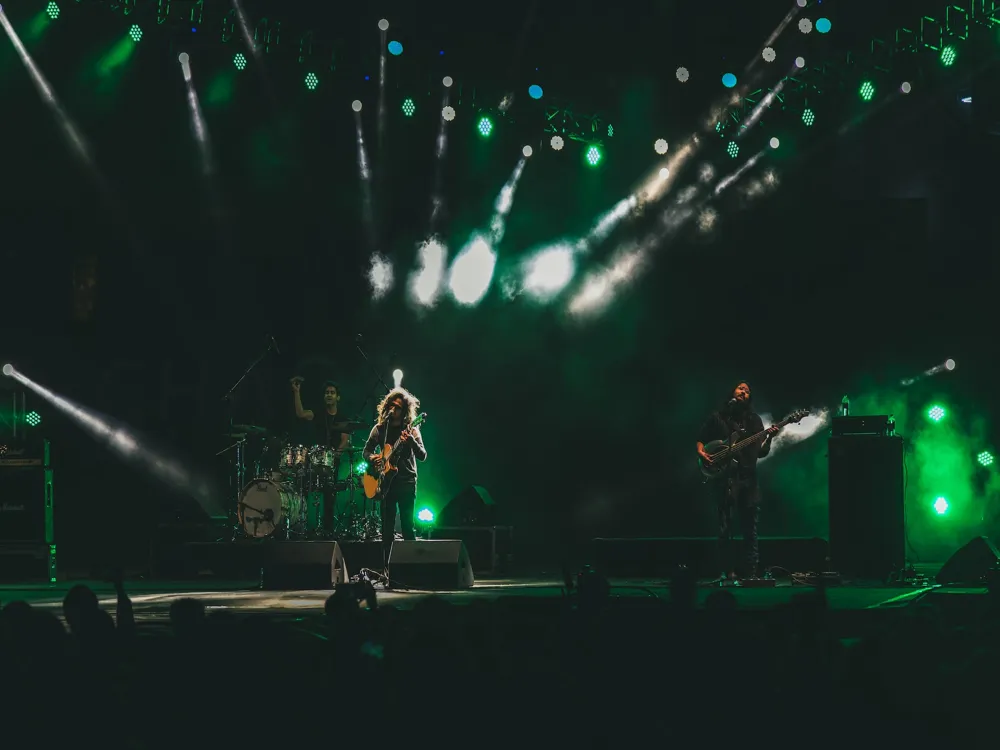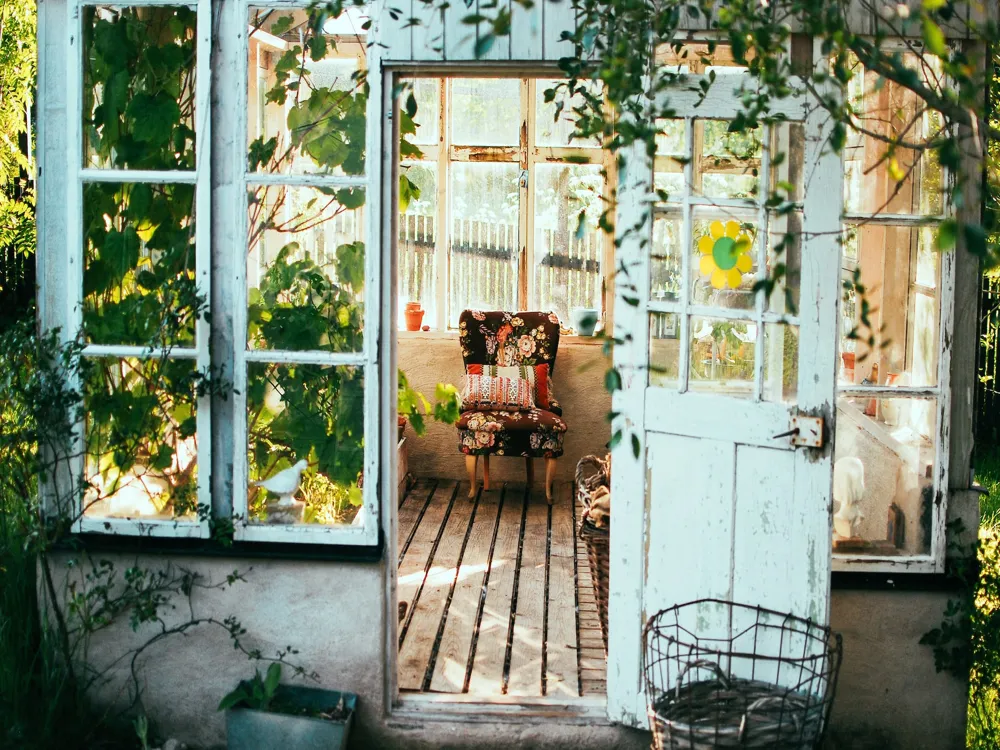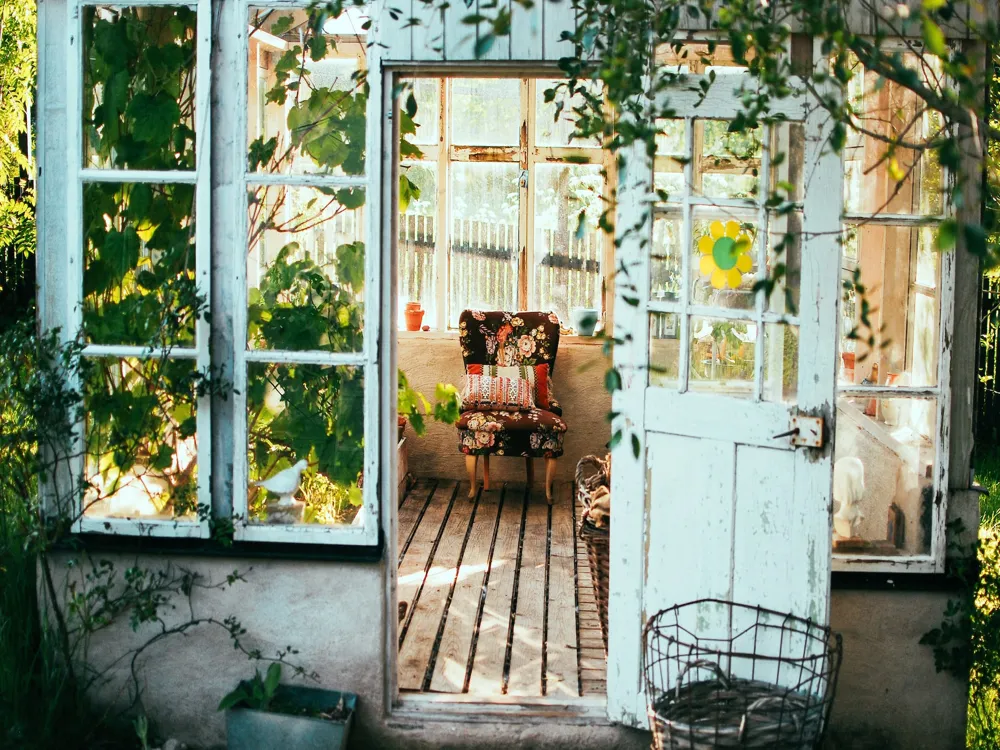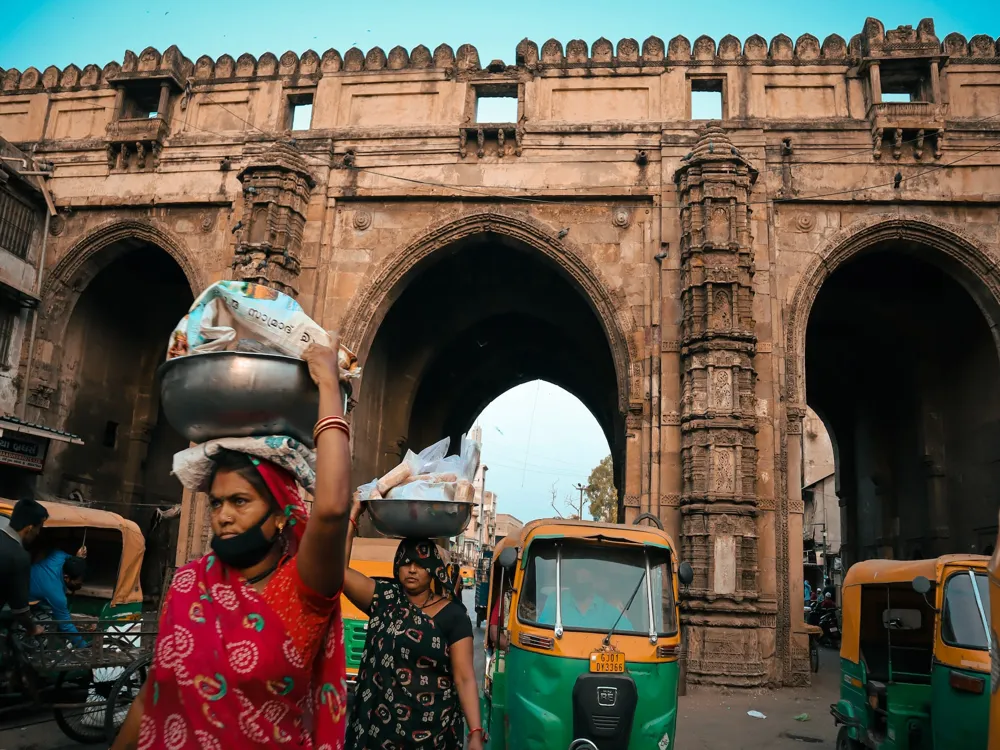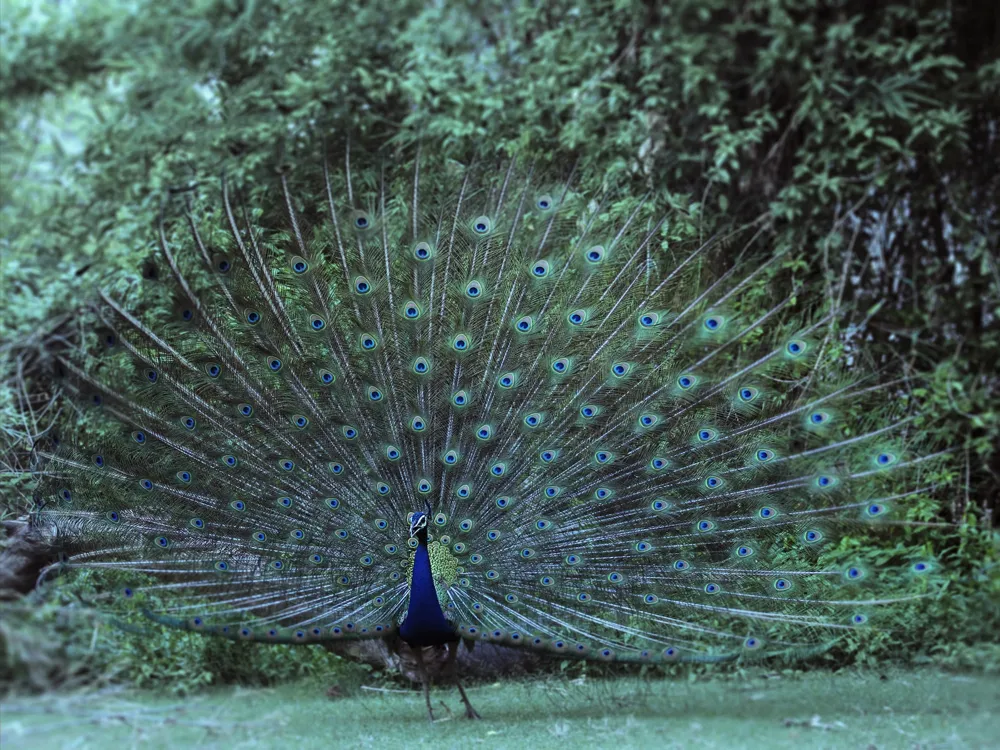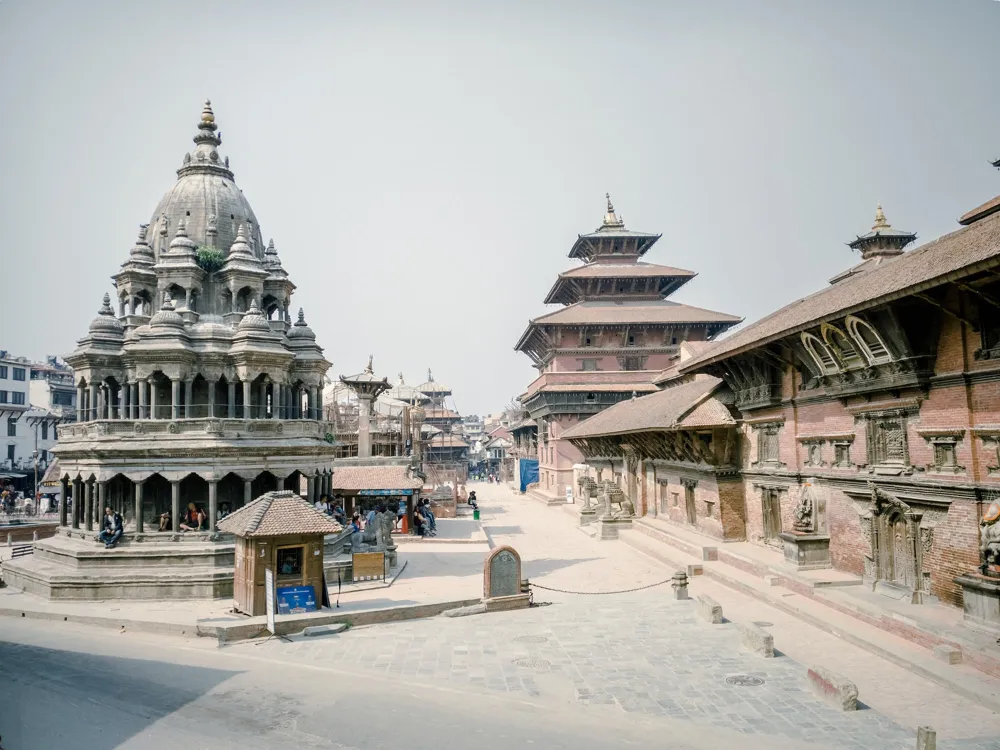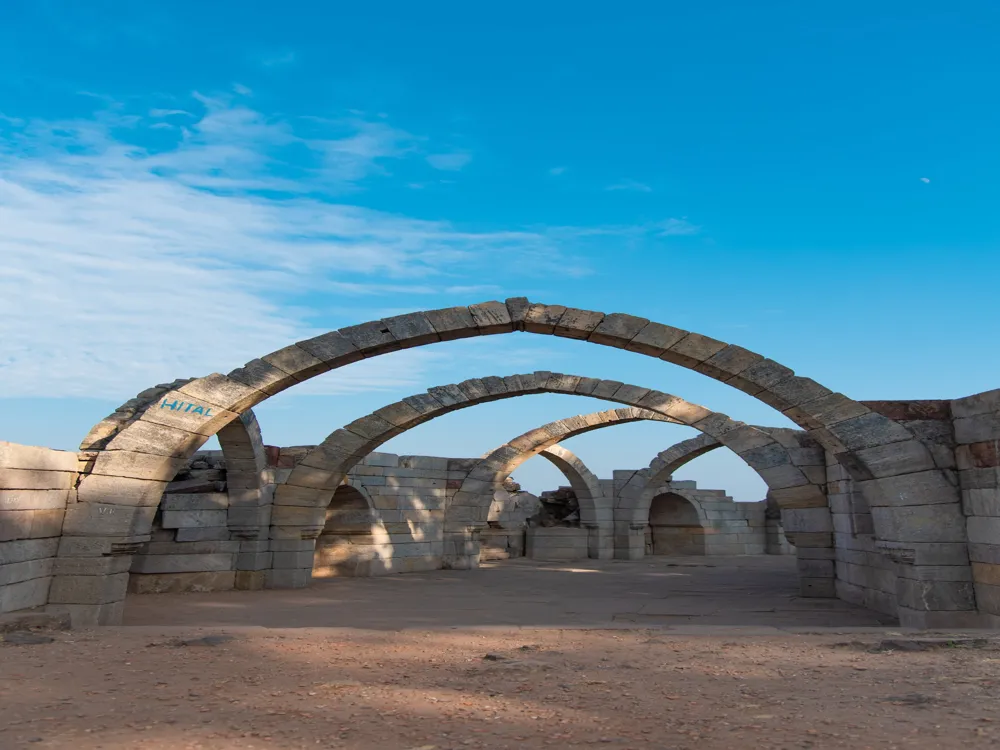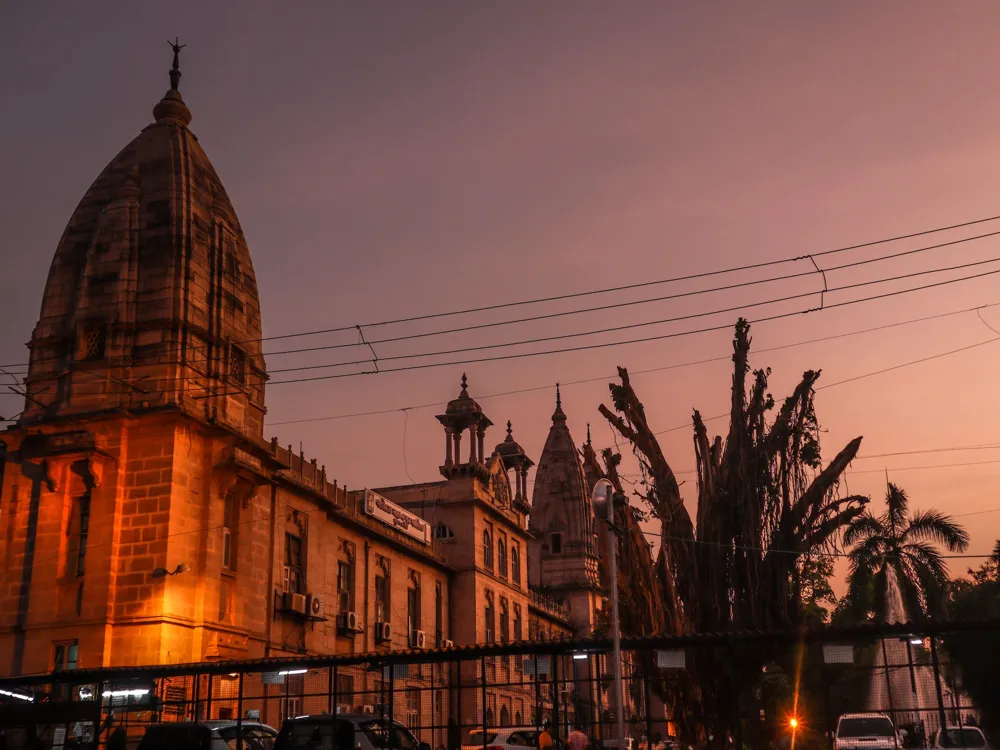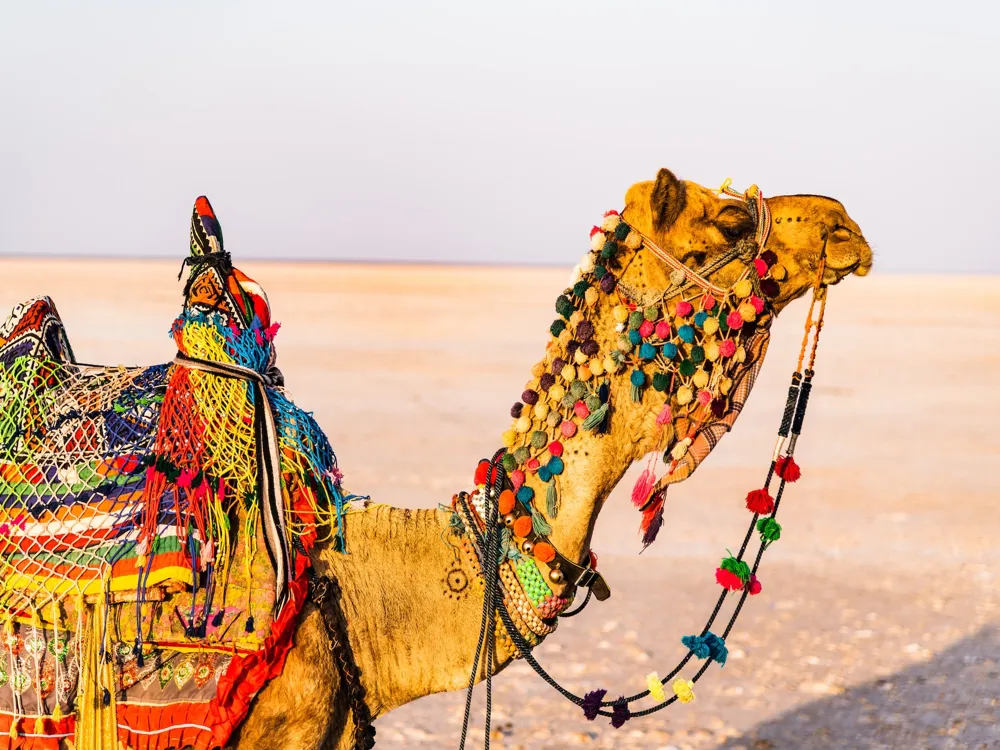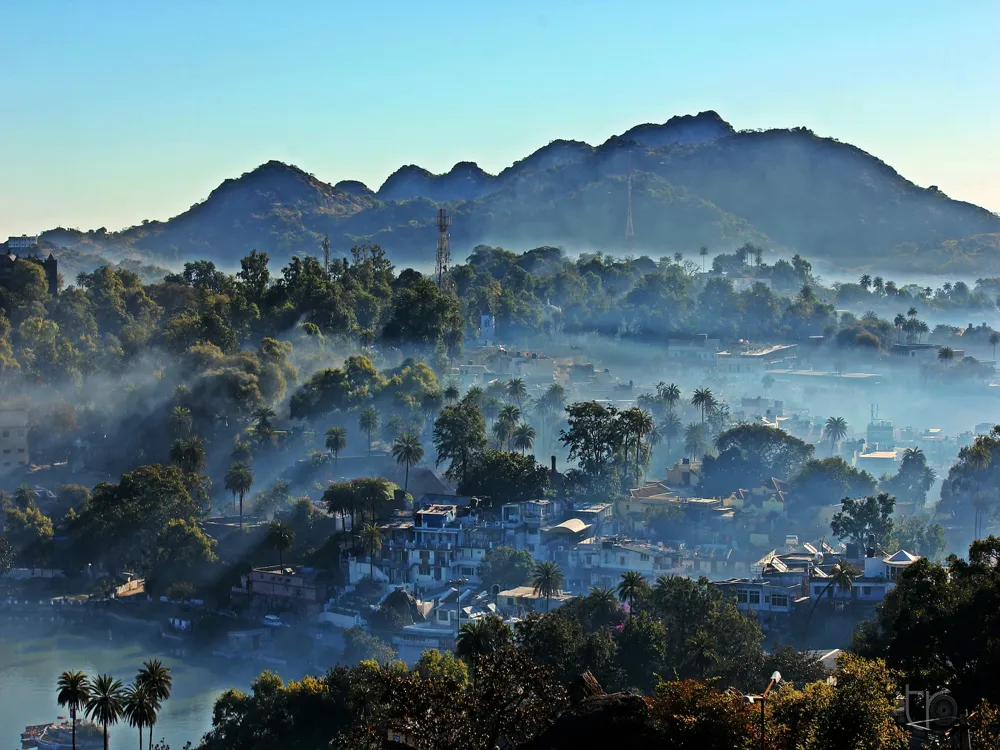Manek Chowk, a bustling square located in the heart of Ahmedabad, Gujarat, is a place of historical significance and vibrant culture. Renowned for its unique blend of history, tradition, and modernity, the Chowk is not just a market area but a pivotal point in the life of the city. Dating back centuries, it has been a witness to the city’s evolution from a regional power center to a modern urban hub. During the day, Manek Chowk is a thriving marketplace, known for its jewelry shops and financial institutions. As the sun sets, the area transforms into a vibrant street food market, attracting food enthusiasts from all over the city. The bustling atmosphere, combined with the aroma of diverse cuisines, makes it a popular hangout spot for both locals and tourists. But Manek Chowk’s significance goes beyond just commerce and cuisine. It’s a place steeped in history, with connections to the city’s founder, Sultan Ahmed Shah. The Chowk is surrounded by historical structures that date back to the 15th century, including the famous Manek Baba’s Temple, after which the square is named. This temple, dedicated to Saint Maneknath, adds a spiritual dimension to the area, making it a site of pilgrimage for many. Furthermore, Manek Chowk plays a pivotal role during festivals and cultural events. It becomes a hub of activities during occasions like Diwali, Navratri, and Uttarayan, showcasing the rich cultural tapestry of Gujarat. The colorful decorations, the rhythm of traditional music, and the spirit of celebration make it a must-visit destination during these festivals. The architecture of Manek Chowk reflects the rich history and diverse cultural influences of Ahmedabad. The square is surrounded by buildings that are a blend of Hindu, Islamic, and European architectural styles, symbolizing the city's inclusive nature. The most prominent feature of Manek Chowk’s architecture is its intricate jali work, a form of perforated stone or latticework commonly found in Islamic architecture. These jalis not only provide an aesthetic appeal but also serve a practical purpose by allowing the cool breeze to pass through, a necessity in Ahmedabad’s hot climate. Another striking aspect is the use of beautifully carved wooden facades and balconies in many of the surrounding buildings. These are typical of traditional Gujarati havelis and add a touch of elegance to the bustling square. The balconies, known as ‘jharokhas’, are not just decorative elements but also serve as vantage points in the past. Moreover, the fusion of styles is evident in the various temples and mosques around the chowk. The Hindu temples, with their intricate carvings and ornate domes, stand alongside Islamic mosques characterized by their spacious courtyards and minarets. This co-existence of different architectural styles speaks volumes about the harmonious blend of cultures in Ahmedabad. The European influence is noticeable in some of the colonial-era buildings surrounding the Chowk. These structures, with their distinct arches and columns, add a layer of colonial history to the area. The blend of architectural styles makes Manek Chowk a living museum, showcasing the city’s evolving aesthetic sensibilities. The ideal time to visit Manek Chowk is during the cooler months from November to February. The weather is pleasant, making it comfortable to explore the area. Additionally, visiting during the evening allows you to experience the vibrant night market and the street food scene. Manek Chowk can get quite crowded, especially in the evenings. It’s advisable to keep personal belongings secure and be prepared for a bustling experience. The area is pedestrian-friendly, so comfortable walking shoes are recommended. When visiting the temples and mosques around Manek Chowk, it’s important to respect the local customs. This includes removing shoes before entering sacred places and dressing modestly. It’s also a good practice to ask for permission before taking photographs of people or religious sites. The street food in Manek Chowk is a must-try. From traditional Gujarati snacks to a variety of Indian cuisines, there’s something for every palate. However, if you have a sensitive stomach, it’s advisable to be cautious about street food and choose well-established stalls. Manek Chowk is easily accessible by various modes of transportation. The nearest airport is the Sardar Vallabhbhai Patel International Airport, which is about 15 kilometers away. From there, one can take a taxi or an auto-rickshaw to reach the chowk. For those traveling by train, the Ahmedabad Railway Station is just about 3 kilometers away, providing easy connectivity. Local buses and auto-rickshaws are readily available for commuting within the city. For a more authentic experience, one can also opt for a cycle rickshaw to navigate through the narrow lanes leading to Manek Chowk. Read More:Overview of Manek Chowk, Ahmedabad
Architecture of Manek Chowk
Tips When Visiting Manek Chowk
Best Time to Visit
Navigating the Crowds
Cultural Etiquette
Exploring the Food Scene
How To Reach Manek Chowk
Manek Chawk
Ahmedabad
Gujarat
NaN onwards
View ahmedabad Packages
Weather :
Tags : Shopping
Timings : 6:00 AM - 2:00 AM,
Vegetable Market- 6:00 AM - 12:00 AM,
Bullion & Jewellery Market and Rani Ni Hajiro- 12:00 AM - 7:00 PM
Food Bazaar- 7:00 PM - 2:00 AM
Time Required : 2-3 hrs
Entry Fee : No entry fee
Planning a Trip? Ask Your Question
Ahmedabad Travel Packages
View All Packages For Ahmedabad
Top Hotel Collections for Ahmedabad

Private Pool

Luxury Hotels

5-Star Hotels

Pet Friendly
Top Hotels Near Ahmedabad
Other Top Ranking Places In Ahmedabad
View All Places To Visit In ahmedabad
Faq on Ahmedabad
What is Manek Chowk Ahmedabad famous for?
Manek Chowk in Ahmedabad is famous for its bustling night market, renowned for its street food stalls serving delicious local delicacies, jewelry shops, and as a vibrant social hub.
What are the must-try foods at Manek Chowk Ahmedabad?
Some must-try foods at Manek Chowk include mouthwatering Gujarati snacks like fafda, dhokla, and khandvi, as well as local specialties like pav bhaji, dosa, and various chaat items.
What are the operating hours of Manek Chowk Ahmedabad?
Manek Chowk is primarily active during the evenings and nights, typically from around 7 PM to late into the night, offering visitors a lively experience filled with food, shopping, and entertainment.
Is Manek Chowk Ahmedabad safe to visit at night?
Generally, Manek Chowk is safe to visit at night, as it's a well-visited area with a bustling atmosphere. However, like any busy public space, it's advisable to be cautious of pickpockets and keep an eye on your belongings.
Are there vegetarian options available at Manek Chowk Ahmedabad?
Yes, Manek Chowk offers a plethora of vegetarian options, including traditional Gujarati snacks, chaats, and other vegetarian street food delights, making it an ideal destination for vegetarians.
View ahmedabad Packages
Weather :
Tags : Shopping
Timings : 6:00 AM - 2:00 AM,
Vegetable Market- 6:00 AM - 12:00 AM,
Bullion & Jewellery Market and Rani Ni Hajiro- 12:00 AM - 7:00 PM
Food Bazaar- 7:00 PM - 2:00 AM
Time Required : 2-3 hrs
Entry Fee : No entry fee
Planning a Trip? Ask Your Question
Ahmedabad Travel Packages
View All Packages For Ahmedabad
Top Hotel Collections for Ahmedabad

Private Pool

Luxury Hotels

5-Star Hotels

Pet Friendly
Top Hotels Near Ahmedabad
Other Top Ranking Places In Ahmedabad
View All Places To Visit In ahmedabadFaq on Ahmedabad
What is Manek Chowk Ahmedabad famous for?
Manek Chowk in Ahmedabad is famous for its bustling night market, renowned for its street food stalls serving delicious local delicacies, jewelry shops, and as a vibrant social hub.
What are the must-try foods at Manek Chowk Ahmedabad?
Some must-try foods at Manek Chowk include mouthwatering Gujarati snacks like fafda, dhokla, and khandvi, as well as local specialties like pav bhaji, dosa, and various chaat items.
What are the operating hours of Manek Chowk Ahmedabad?
Manek Chowk is primarily active during the evenings and nights, typically from around 7 PM to late into the night, offering visitors a lively experience filled with food, shopping, and entertainment.
Is Manek Chowk Ahmedabad safe to visit at night?
Generally, Manek Chowk is safe to visit at night, as it's a well-visited area with a bustling atmosphere. However, like any busy public space, it's advisable to be cautious of pickpockets and keep an eye on your belongings.
Are there vegetarian options available at Manek Chowk Ahmedabad?
Yes, Manek Chowk offers a plethora of vegetarian options, including traditional Gujarati snacks, chaats, and other vegetarian street food delights, making it an ideal destination for vegetarians.







